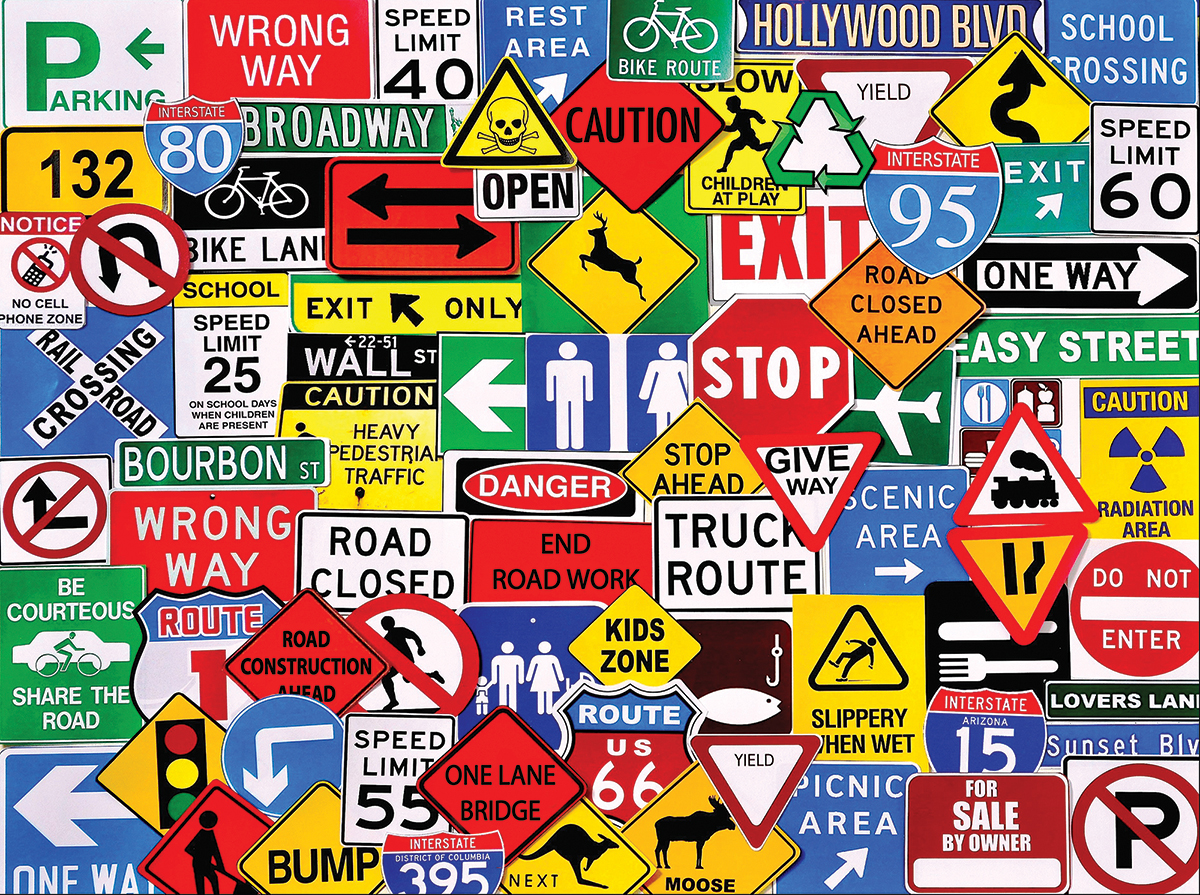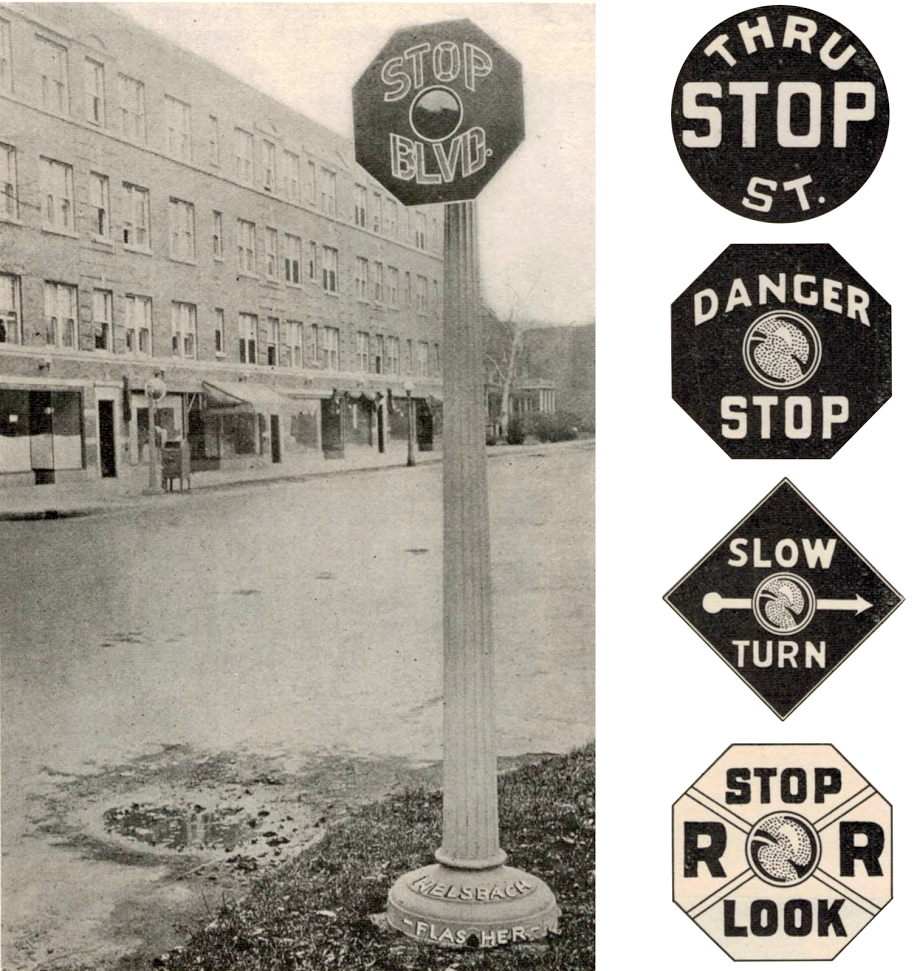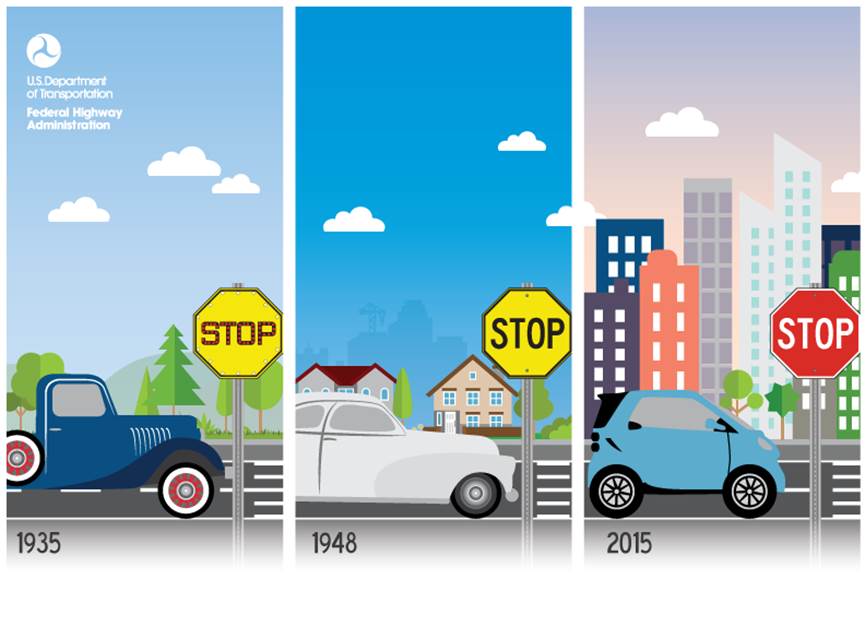
All About Traffic Signs: Fun Facts and History
Every Colorado native is familiar with the long, turn-the-car-off delays of trying to cross a mountain pass when there is construction. Traffic signs like those are oftentimes met with grumbles and sighs. Although we often take traffic signs for granted, we rely on them every day when we get in the car. So keep reading, and we will dive into the interesting history of traffic signs that led to their adoption and standardization across the U.S.A!
The VERY First Roads (and Traffic Signs)

Image of Roman milestone courtesy of Wikipedia.org
What came first: the automobile or the traffic sign? Let’s ask the Romans. The Roman Republic built some of the first managed road networks in the history of the world, with more than 50,000 miles of ‘highway’ between the Mediterranean, Spain, and Northern Africa. They even built their roads with an early form of concrete made from volcanic ash! And not only did the Romans build very sophisticated roads, but they also included traffic signs to match! These Roman signs consisted of piles of stone to denote each mile along the road. Now you know where the term ‘milestone’ comes from! (For another interesting fun fact about milestones, check out the U.S. idea of the “zero milestone!” )
Unlike the Roman Empire, traffic signs continued to prosper into the Middle Ages. In addition to signs marking mileage, many civilizations added signs at intersections to help travelers find their way! The folks in the Middle Ages also came up with a new way to name roads. Instead of giving them fancy names like the Romans, they named their roads after the towns they went to! The civilizations of the Middle Ages didn’t do a great job maintaining their roads, however, so their signs may not have helped much!
Traffic Signs Enter the Modern World

Courtesy of RoadTrafficSigns.com
Fast forward to more recent history. Now we’ve got bicycles, pedestrians, horses and carriages, and for the first time….automobiles. Cyclists were the first people to call out the need for signs. Local clubs and groups started to erect signs for cycling road conditions and dangers, although there was little consistency in the sign designs!
As cars grew in popularity, local clubs also started to build traffic signs for them, too. In 1899, the American Automobile Association took the lead, however many other state clubs also put signs out at their leisure. In some intersections, there were multiple conflicting signs by different groups!
The federal government saw traffic signs as an important part of state development, however. In 1916 it required that all states have a highway department in order to get federal aid. This was just one year after the first STOP sign was erected in Detroit, and two years after the first electric traffic sign was built in Cleveland!
Standardization: Getting Signs on the Same Page

Courtesy of MUTCD.gov
As more clubs and groups built their own signs, the information on the side of the road got out of hand. That’s why the ‘Mississippi Valley Association of Highway Departments’ stepped in. These midwestern states decided to find a way to standardize highway signs. They succeeded in publishing two manuals, one for rural and urban signage, which were eventually combined in 1935 into the “Manual on Uniform Traffic Control Devices.”
With this manual came some of the familiar shapes we now recognize across all signs in the US. These include (from dornbossign.com):
- Round for railroad crossing
- Octagon for stop
- Diamond for curve ahead
- Square for caution or attention
- Rectangle for mileage and speed limit signs
Although the rules were laid out in the manual, the federal government did not step in to fully regulate road signs until 1948. Other developments, such as signs and sounds for the hearing and vision impaired, yellow road lines for multi-directional traffic, and traffic sign reflectivity and lighting, continued to appear later in the 20th century.
4 Fun Facts about Traffic Signs
Now that you know the basics of sign history, its time to learn some fun facts. The next time you are riding around in your Mercedes-Benz, passing signs as you go, tell whoever you are with these fun facts to increase your car-cred!
- Sign alerts for animal crossings were invented in the 1950s in Nevada, but they weren’t fully embraced until the 1990s across the country!
2. The first traffic light was in London in 1868 in front of the British Parliament. Traffic lights didn’t make it to the US until 1914, when they were installed in Cleveland, Ohio!
3. Traffic signs are meant to break in half in the event of a car collision.
4. One of the largest manufacturing plants for traffic signs is a medium-security prison! There are 1,000s of inmates at Franklin Correctional Center in North Carolina who make many of the US traffic signs, which sell for around $95 million dollars a year.
Take What You Know to the Road

The New 2020 Grey A 35 Sedan from Mercedes-Benz
Now that you are an expert on road signs and highway history, take what you know to the road! Attend the Mercedes-Benz driving academy, start looking at new 2020 releases, or just come down to Mercedes-Benz of Littleton to pick out your next luxury ride. And if you are not sure where to drive to next, then check out some of our amazing vacation ideas!


